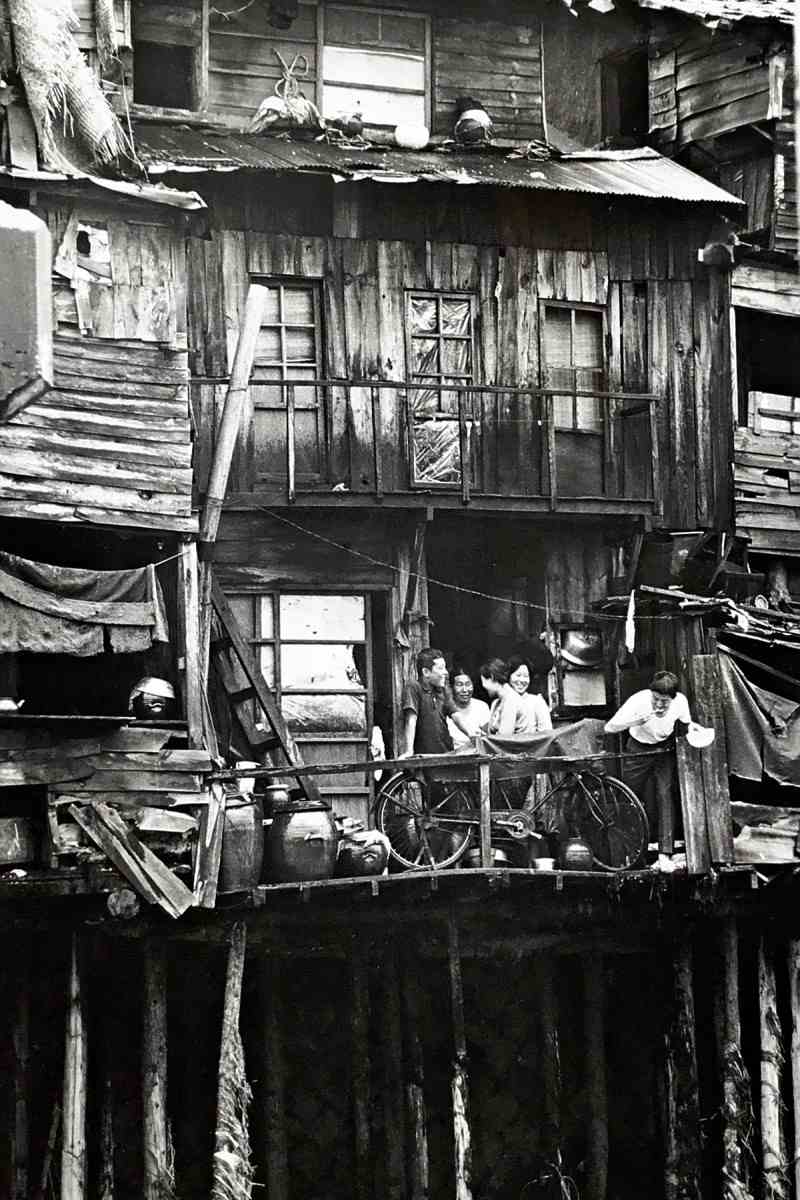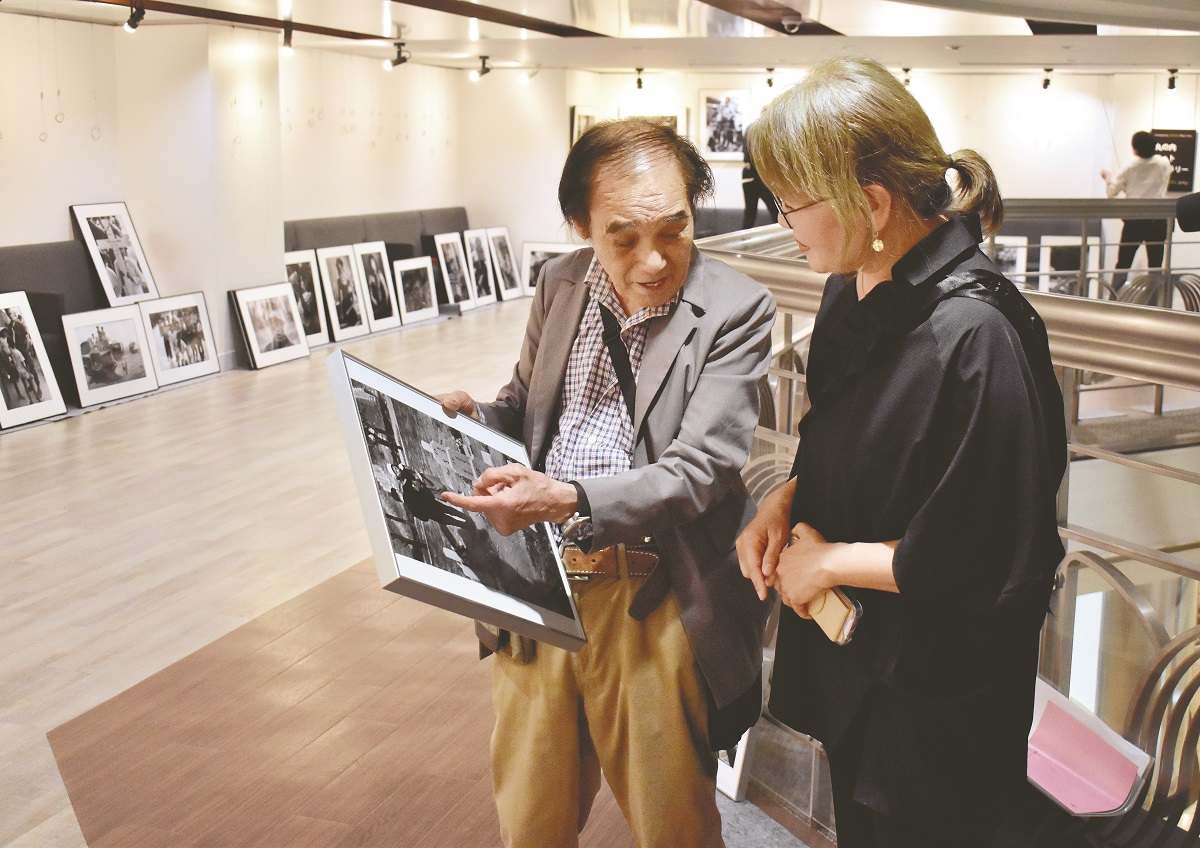South Korean Director Making Documentary on Japanese Photojournalist Shisei Kuwabara Who Covered Modern Korean History

This photograph by Shisei Kuwabara shows people looking out from a shack house near Cheonggyecheon Stream in central Seoul in 1965.
1:00 JST, April 30, 2024
South Korean director Ko Hee-young, 57, is producing a documentary about photojournalist Shisei Kuwabara, 87, known for photographing Minamata disease and South Korea during the era when Japan and South Korea restored bilateral relations.
The film is tentatively titled, “Hodoshashinka Kuwabara Shisei” (Photojournalist Shisei Kuwabara).
“There’s a profound human story in each and every photo [by Kuwabara],” Ko said. “I’d like the world to know about this photographer.”

Shisei Kuwabara, left, and Ko Hee-young speak to each other.
Ko is planning theatrical releases of the film in both Japan and South Korea next year.
It was in 1964 that Kuwabara began taking photos in South Korea, recording such historical moments as students’ protests against the signing of the Treaty on Basic Relations between Japan and the Republic of Korea, as well as the South Korean military force’s deployment of troops to Vietnam. Those photos have become important historical source material for those learning the modern history of South Korea.
Ko is an accomplished film director who has been awarded a special jury prize at the Jeonju International Film Festival in South Korea. When she made a documentary about a South Korean potter, Kuwabara gave her permission to use relevant photos that he had taken. The photos apparently left a great impact on Ko because of their deeply dramatic nature.
Production of the film about Kuwabara’s life went ahead after a South Korean government organization agreed to subsidize it. Kuwabara provided Ko with about 500 photos to be used in the film. Among them are photographs depicting certain aspects of South Korean society that citizens at the time did not want foreigners to see.
Case in point is the clusters of shack houses near Cheonggyecheon Stream in central Seoul. When Kuwabara pointed his camera to the houses, a South Korean photographer friend of his told him, “Don’t photograph that place too much,” with a worried look.
“When I see those photos now, I think he did really well to record those places,” Ko said. “He took the photos with no bias, as if he were a boy.”
She wonders why Kuwabara clicked the shutter at particular moments. Through making the film, Ko hopes to get closer to Kuwabara’s awareness of the problems in the backgrounds of those photos as well as his philosophy and set of values.
“To young people, both Minamata disease and the South Korean student protests may be things of the long past,” Kuwabara said. “But history is continuous. I’d be glad if people keep my photos in the corner of their memories and use them to help to understand the present.”
"World" POPULAR ARTICLE
-

8 Japanese Nationals Stranded on Indonesia’s Sumatra Island
-

Mozambican Cooking Class Held in Matsuyama, Ehime Pref.; Participants Don Aprons, Bandanas Made from Traditional Mozambique Fabric
-

China to Impose Sanctions on Shigeru Iwasaki, Former Head of Japan’s Self-Defense Forces, Who Serves as Adviser to Taiwan’s Executive Branch
-

China Steps Up ‘Wolf Warrior’ Diplomacy Against Japan, Hurling Accusation About Plutonium Stockpile
-

U.S. Senate Resolution Backs Japan, Condemns China’s Pressure
JN ACCESS RANKING
-

Keidanren Chairman Yoshinobu Tsutsui Visits Kashiwazaki-Kariwa Nuclear Power Plant; Inspects New Emergency Safety System
-

Imports of Rare Earths from China Facing Delays, May Be Caused by Deterioration of Japan-China Relations
-

University of Tokyo Professor Discusses Japanese Economic Security in Interview Ahead of Forum
-

Japan Pulls out of Vietnam Nuclear Project, Complicating Hanoi’s Power Plans
-

Govt Aims to Expand NISA Program Lineup, Abolish Age Restriction






















